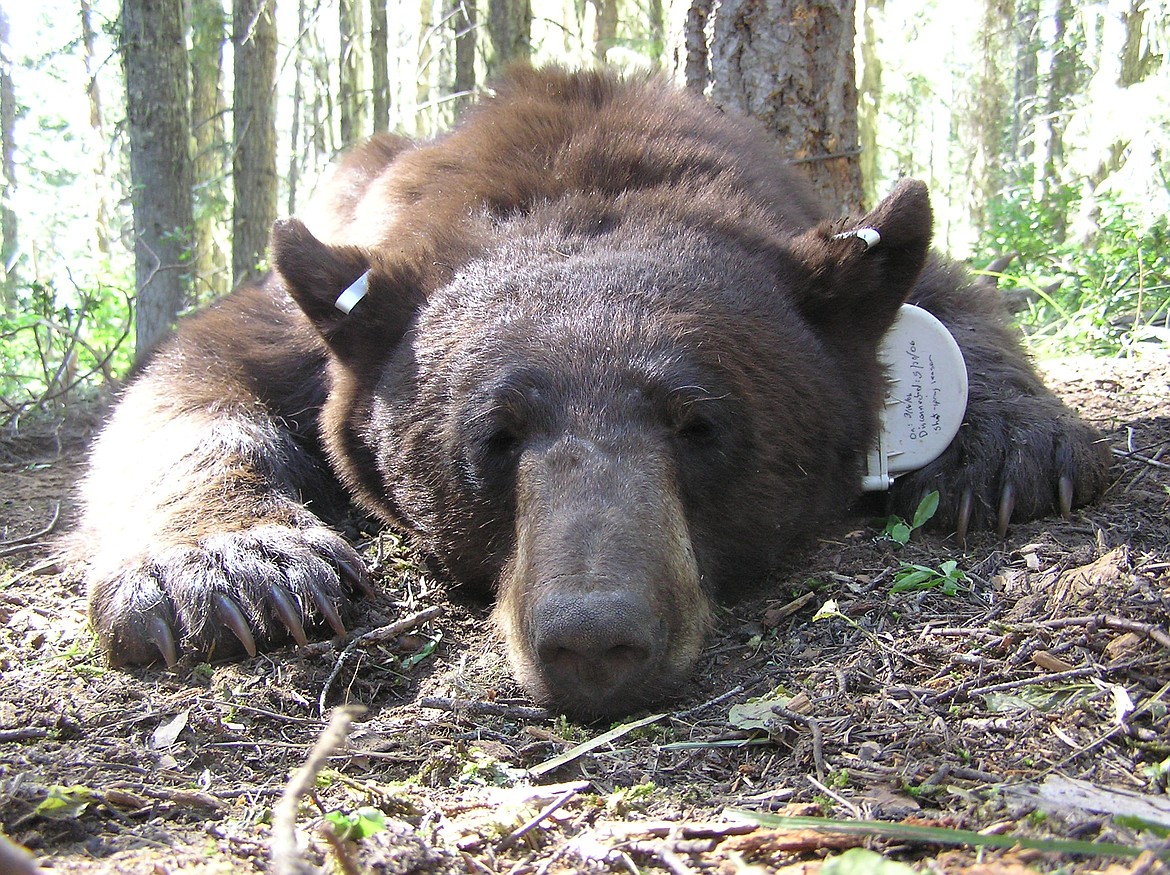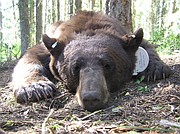Spring wake-up call: It's black bear season
There was that one bear that denned 40 feet up a hollow cedar tree.
It may not have been the best place to den, but the black bear didn’t seem to mind, said Wayne Wakkinen, regional game manager for Idaho Fish and Game.
“When you flew over it, and looked down, you would see the bear,” Wakkinen said.
The black bear stayed in the den all winter, with minimal protection from falling snow.
“He didn’t seem to mind that he was exposed to the sky,” Wakkinen said.
Other North Idaho black bear have better sense, but when they leave their dens in the next few weeks, the bulk of them will stay nearby before venturing too far to find food.
That means hunters likely won’t start seeing black bears on roads, in clearcuts or meadows for a while, unless they know where to look.
“They won’t move much for the next week or two,” said Wakkinen, who for 24 years studied bears in the Panhandle — mostly in Units 1 and 2.
“They will stay around their den sites until their metabolism gets going.”
An entire winter without food requires they become acclimated to necessary out-of-den functions, like eating.
“They are pretty lethargic,” Wakkinen said.
Idaho’s spring bear hunts are general tag hunts, and bear tags are often purchased by residents in a sportsman’s pack, which provides tags for a variety of species and costs around $140. A lone resident bear tag costs between $11.50 and $13.75 and a bear bait permit costs around $15. Bear baiting, or running bears with dogs is prohibited in Unit 1, in the northwest section of the Panhandle, one of the state’s best bear hunting units.
Wakkinen said success rates for hunters are difficult to track because many people buy their tags through the sportsman’s pack and many hunters only use the bear tag if they see a bear while hunting another species.
“We don’t know what the participation of the hunt is,” Wakkinen said. “We have a good handle on how many are harvested, but we don’t have a true measure of effort.”
In 2016, 167 bears were harvested in Unit 1, which encompasses an area north of the Pend Oreille River and east to Clark Fork. Of the 167, most were boars (118) and most of the bears (98) were taken in the spring hunt by stalking. In the Panhandle’s other most productive bear hunting units, 164 bears were harvested in Unit 4 where hounds and bear baiting is allowed, and 100 bears were harvested in Unit 6.
Anyone who harvests a bear must check it with a Fish and Game officer, who removes a tooth to gather age-related data, and tags the pelt.
Most of the bears killed in the spring in North Idaho weight around 150 pounds, and 200 pounds is considered a big bear.
“It’s a matter of diet,” Wakkinen said. “We don’t get big bears here.”
Mike Sluka, who graduated from Kootenai High School and learned to guide before purchasing Longtail Outfitters in Naples, which specializes in spring bear hunts, agrees with Wakkinen on the size of North Idaho black bears.
“They are usually around 200 pounds in the spring and average 5 1/2 to 6 feet,” Sluka said. “The same bear will be around 260 to 280 pounds in the fall.”
If a bear comes out of hibernation pushing 250 pounds, Sluka said, it will weigh around 300 pounds in the fall.
“That’s as big as you’ll see around here.” he said.
Sluka, a houndsman, takes clients to Unit 2 where he is allowed to hunt black bears with his dogs. This time of year in that unit, he is tending to bait sites — although he doesn’t expect bears to hit the bait cans for several weeks until their digestive systems return to spring feeding mode.
“The first place you’ll see them is on old logging roads nibbling green grass,” he said. And on southern hillsides, anywhere grass is greening up.”
So far this spring — which followed a heavy winter — access to bear hunting sites has kept a lot of people out of the woods.
“Right now we still have three feet of snow where there wasn’t any last year at this time,” he said.
Hunters in his areas are often impressed by the color phase bears, he said. Chocolate and cinnamon-colored bears are the norm in the northern Panhandle, he said.”Most bears we see are color-phase,” he said.



